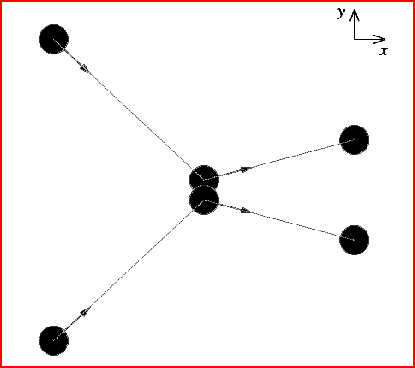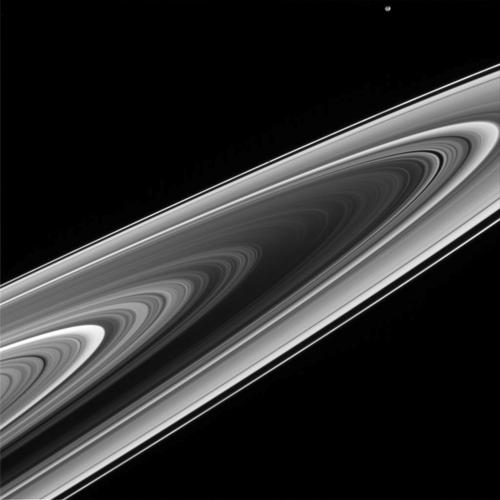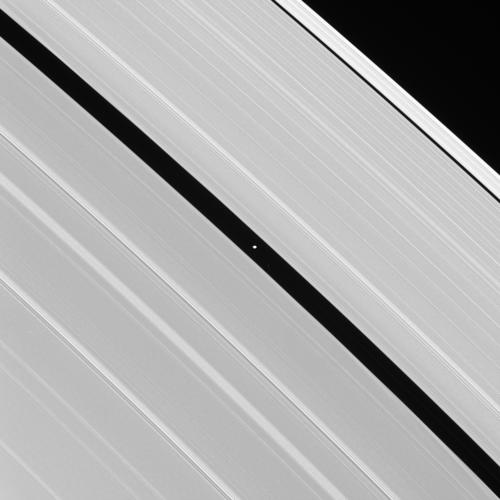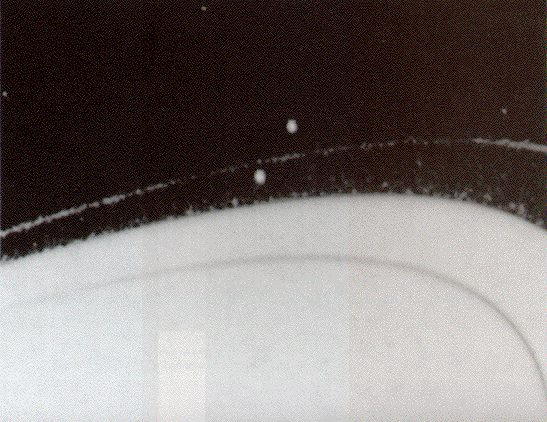
(Cassini views Dione through Saturn's edge-on rings)
How do they stay thin?

Saturn's rings are 200,000 km wide
but a few tens
of meters thick -- "as thin as a sheet of
tissue
paper spread across a football field." (Cassini views Dione through Saturn's edge-on rings) How do they stay thin? |
 |
The particles experience (partially inelastic)
collisions,
which damp out their vertical motions:
 |
These collisions keep rings thin, and also
moving in
circular orbits. The velocity dispersion in Saturn's rings is probably
0.1 cm/s or less (one ten-millionth of their orbital velocity!).
|
Jupiter's rings are much
lower
in particle density -- would you expect them to be thinner or thicker
than
Saturn's rings?
What causes gaps and grooves in rings?
 |
 |
|
Orbital resonances with moons.
Many more grooves exist than can be accounted for by simple resonances with moons -- the situation is very complex, and not fully understood. |
|
Saturn's moon Pan,orbiting in the Encke division. What's in store for Pan? |
 |
Notice the very thin outer ring - how did it get that way? Something must be keeping the ring "in line": shepherd moons.
Shepherd moons orbit just inside or just outside of the ring in question.

The gravitational effects of the shepherd moons can also result in interesting "kinks" and "braids" in the rings.

What causes ring spokes?
 Voyager
found dark spokes in Saturn's rings. Because
the ring particles orbit differentially, spokes should quickly shear
out
and not exist for very long. So
they can't be masses of darker ring particles -- what are they? (Ring
spokes in action)
Voyager
found dark spokes in Saturn's rings. Because
the ring particles orbit differentially, spokes should quickly shear
out
and not exist for very long. So
they can't be masses of darker ring particles -- what are they? (Ring
spokes in action)
Spokes move at the planet's rotation rate (much
faster
than the orbital speed) -- charged dust
particles
suspended by Saturn's magnetic field! The dust
particles
cast shadows on the ring surfaces -- the spokes.